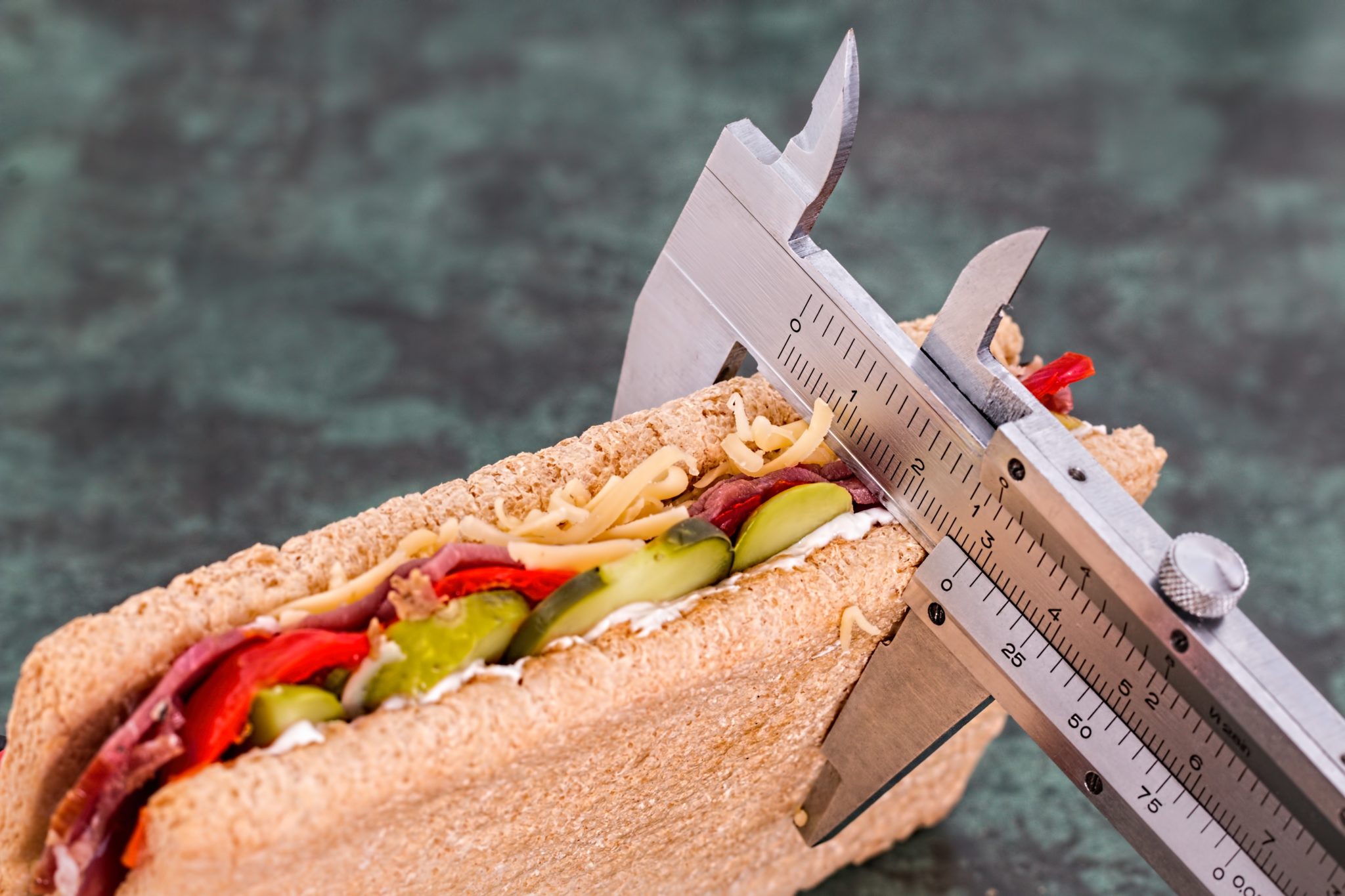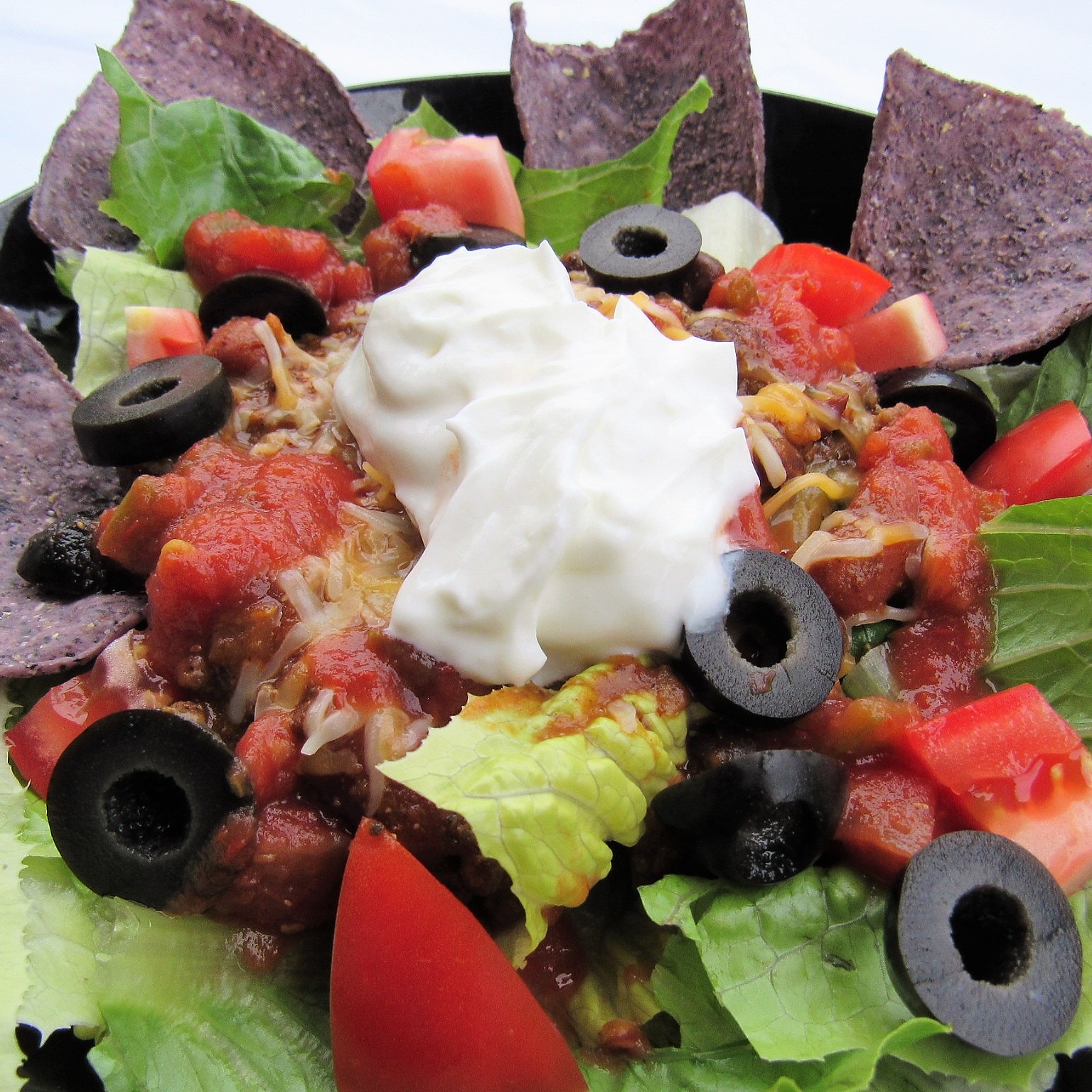The dreadfully overstated phrase, “eat less and exercise more” is common in the healthcare office and on news reports, but the simplicity of the phrase does not even remotely touch the complexity of the matter. If you have heard this statement recently, maybe it has caused you to roll your eyes, resent the person who said it, or even melt down just thinking about the colossal undertaking this would be. Or, maybe you heard this phrase and decided, ‘Yes, I will step up to the challenge!’ but then life happened and without intention, you were back into your regular routines.
Research does demonstrate that reduced portions can contribute to weight loss. But, sustaining the smaller portions may not be as feasible long term. We may feel deprived and resentful that we are having to eat the smaller portions and even if the portions sustain us, we can become wrapped up in the feelings of deprivation that we actually idolize the food in our minds.

For example, if we limit ourselves to the ½ cup serving of ice cream as the nutrition label defines, it may look like a measly bit in the bowl. It may then begin to trigger plans for a “cheat day” when you take your family to the ice cream parlor and you imagine the most decadent treat. Whether you actually take your family isn’t the issue, the real problem lies in the feelings of discontentment with the smaller portion because these feelings will continue to invade our thoughts until we one day cave to a monstrous craving. Thus, the diet cycle continues.
It is not my intention to discredit recommendations for smaller portions. And in fact, there are dozens of easy ways to help you reduce portions by simply addressing your environment, planning ahead and intentionally using smaller dinnerware. Brian Wansink, author of Mindless Eating, provides a plethora of research on this topic and useful solutions to implement into your daily routines.
With over ⅔ of the American population either overweight or obese, it is evident that the recommendation to “eat less and move more” is not working. It doesn’t motivate society and isn’t changing our culture. The reason is simple- it is not only difficult, it is almost impossible to follow.
Several reasons include:
Food Advertising- It is everywhere! … Billboards, social media, mobile devices, television, flashing signs as you are driving down the road. If you think you are not phased by it, I argue that you can’t NOT be phased by it. Have you ever stopped for “HOT DOUGHNUTS”? I rest my case.
Highly Palatable Foods– Manufacturers don’t just want to make good tasting foods we will buy, they put their foods through strict testing in the labs to create recipes that beg us to eat more. They are intrigued and motivated by the idea of making foods so tempting that you can’t stop at just 1 or 2 or 10.
Meal Planning Priorities– Life is busy. If you have met anyone that is not, they are a rare find. With so much fighting for our time, dedicating time for meal planning, shopping and preparing is not only a challenge, it can be overwhelming.
Efficiency– No longer do we have to get up and walk to a meeting, we log in and sit in our office. No longer do we have to walk into a store and shop, we order online and pick up at the service desk. We live in a time when we are encouraged and expected to reduce and limit our physical exertion so that we have the potential to accomplish more. Why waste your time walking into a store when you can go through the drive thru?
For these reasons and more, we are being fed messages that are ridiculously difficult to overcome.
Thankfully ‘almost impossible’ does not equal ‘impossible.’ It never has and it never will. From the hundreds of patients I have worked with over the years, it excites me every time when I consider how so many of them have overcome the odds, refused to be labeled by statistics and are working not only to change their lives but their family tree.
One of the valuable strategies these patients have implemented is Volumetrics. It is not a diet or specific meal plan, but an idea that if we change the types of foods we are eating to those that are higher in fiber and water content (like fruits and vegetables) and lower in fat, we can continue to eat similar sized portions while reducing total calories at the meal.
This healthy eating strategy, researched and developed by Barbara Rolls, PhD, truly focuses on eating whole, nourishing foods and less processed, energy dense (ie. high calorie) foods. This is exactly the method I try to eat every single day. It is a lifestyle of choosing foods that energize, reduce brain fog and mental fatigue, fill me up and make me feel good about my body. Because it is not a diet plan, it doesn’t mean that there are never treats- higher calorie foods I really, really like. It is a guideline I use to make a choice about what I eat before I take the first bite.

Below I have listed some of my favorite ways that I put this concept into practice. It has saved me hundreds of calories and it can help you do the same!
- Spread toast with 1 tablespoon avocado in place of butter or margarine (save 75 calories).
- Mix your whole grain (brown rice, quinoa, farro, barley) with steamed or roasted vegetables to keep the portion large while reducing the calories (save 80-100 calories by eating 1/2 cup cooked grain instead of 1 cup)
- Use 2 corn tortillas on Tex Mex night instead of flour tortillas (save 200 calories)! Even whole grain or whole wheat tortillas have an average of 150 calories each so be brand wise when you choose!
- Slice 2 medium fresh strawberries to flavor your toast in place of 1 tablespoon of strawberry jelly (save 40 calories) OR smash ¼ small banana (save 25 calories).
- Make mashed potatoes by replacing half of the potatoes with cauliflower (save 55 calories). Hint: steam cauliflower pieces along with the potatoes, drain water and then mash. If you want the mash silky smooth, use a food processor to puree.
- Avoid the 1 oz serving of high calorie croutons and instead crumble 2-3 crunchy whole grain crackers on top of your salad, like Triscuits brand (save 60-80 calories).
- Go pasta-less one night and replace with spaghetti squash or zucchini noodles (save 170 calories per 1 cup portion).
- Instead of eating chicken wings, replace with moist, skinless chicken thigh or skinless chicken breast (save 80-125 calories or 3.5oz portion).
- Choose a refreshing sparkling water in place of a soda (save 150 calories per 12oz). It won’t dehydrate you either!
- Order your grande latte with skim milk instead of having them make it traditional with whole milk (save 90 calories).
Even if you only use 2-3 of these strategies, you can save yourself hundreds of calories each week AND feel good about doing it. Consider how you can make a few swaps without having to take too much extra effort.
“The best diet is the one you don’t know you are on.”- Brian Wansink.
TRUTH: Do you not know that your bodies are temples of the Holy Spirit, who is in you, whom you have received from God? You are not your own; you were bought at a price. Therefore honor God with your bodies.
1 Corinthians 6:19-20
